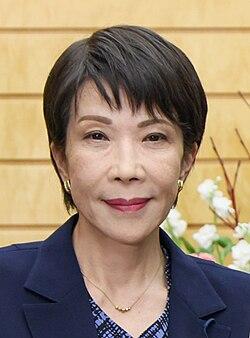Sanae Takaichi has made history by becoming Japan’s first female prime minister, following her selection by fellow lawmakers in a landmark political decision. Known for her ultraconservative stance, Takaichi’s appointment marks a significant moment in Japan’s political landscape, reflecting both a break from tradition and a reaffirmation of conservative values. Her rise to the nation’s highest office comes amid ongoing challenges and debates over Japan’s future direction, positioning her as a pivotal figure to watch on the global stage.
Sanae Takaichi Breaks Ground as Japan’s First Female Prime Minister
Sanae Takaichi’s historic appointment marks a pivotal moment in Japanese politics, shattering a long-standing glass ceiling in one of the world’s most traditionally male-dominated arenas. Known for her ultraconservative stance, Takaichi secured the prime ministerial position following a decisive vote among lawmakers, positioning herself as a central figure in shaping Japan’s future amid regional and global challenges.
Her political platform emphasizes:
- Strengthening national security with increased defense capabilities
- Economic revitalization focused on innovation and export growth
- Preserving cultural values and traditional social structures
- Expanding diplomatic alliances to bolster Japan’s influence worldwide
| Key Issue | Takaichi’s Approach |
|---|---|
| Defense | Increase military budget & regional partnerships |
| Economy | Focus on tech innovation and export growth |
| Social Policy | Promote family values and traditional norms |
| Foreign Relations | Strengthen alliances, particularly with the U.S. and Asia-Pacific |
Ultraconservative Policies Signal Shift in Japan’s Domestic and Foreign Agenda
Sanae Takaichi’s ascent to the premiership marks a defining moment in Japan’s political landscape, setting the stage for a decisive tilt towards ultraconservative governance. Known for her staunch nationalist views, Takaichi is poised to implement policies emphasizing traditional values, stronger defense postures, and a reassertion of Japan’s sovereignty on the global stage. Analysts anticipate rigorous domestic reforms aimed at bolstering social cohesion through education reforms that prioritize patriotic curricula and family values. Additionally, her administration is expected to challenge long-standing economic policies with an eye towards self-reliance and strategic industrial revitalization.
On the foreign policy front, Takaichi’s leadership signals a departure from pacifist diplomacy, hinting at increased collaboration with regional allies to counterbalance China’s growing influence. Key initiatives likely to be prioritized include:
- Reinforcement of the Japan-U.S. alliance with potential expansions in defense cooperation.
- New security protocols to enhance maritime and cyber defense capabilities.
- Push for constitutional revisions aimed at allowing a more proactive military stance.
| Policy Area | Projected Focus | Expected Impact |
|---|---|---|
| Education | Nationalistic Curriculum Reform | Stronger Identity & Cohesion |
| Defense | Expanded Military Alliance | Increased Regional Security |
| Economic Policy | Industrial Self-Reliance | Reduced Foreign Dependency |
Analyzing Lawmakers’ Support and What It Means for Japan’s Political Future
Sanae Takaichi’s unprecedented rise as Japan’s first female prime minister signals a profound shift in the nation’s political landscape, underscored by the backing of ultraconservative lawmakers. Her support base primarily consists of factions emphasizing national security, traditional values, and economic reform. This coalition reflects growing momentum within the ruling party to adopt a more assertive stance on regional issues, particularly regarding China and North Korea. Political analysts note that her election consolidates hardline elements within the government, potentially reshaping diplomatic strategies and domestic policies alike.
The composition of lawmakers rallying behind Takaichi highlights distinct ideological divides that could challenge party unity moving forward. Key supporters include members from:
- Security-oriented caucuses advocating for increased defense spending
- Conservative groups focused on preserving cultural heritage and social norms
- Economic reformists pushing for deregulation and fiscal austerity
These alliances suggest that Japan’s political trajectory may veer towards a more centralized, right-leaning governance model. The implications extend beyond policy; her leadership style is expected to redefine intra-party dynamics and influence forthcoming elections.
| Lawmaker Group | Primary Focus | Estimated Support Share |
|---|---|---|
| National Security Caucus | Military Strengthening | 40% |
| Traditional Values Alliance | Social Policies | 35% |
| Economic Reformists | Deregulation & Fiscal Policy | 25% |
In Retrospect
Sanae Takaichi’s appointment as Japan’s first female prime minister marks a historic milestone in the nation’s political landscape. As an ultraconservative figure, her leadership is expected to bring significant shifts in policy and governance, reflecting both her personal ideology and the priorities of her party. Lawmakers’ selection of Takaichi underscores a pivotal moment for Japan, signaling potential changes on the domestic and international stage. Observers will be closely watching how her tenure unfolds amid the challenges facing the country.




